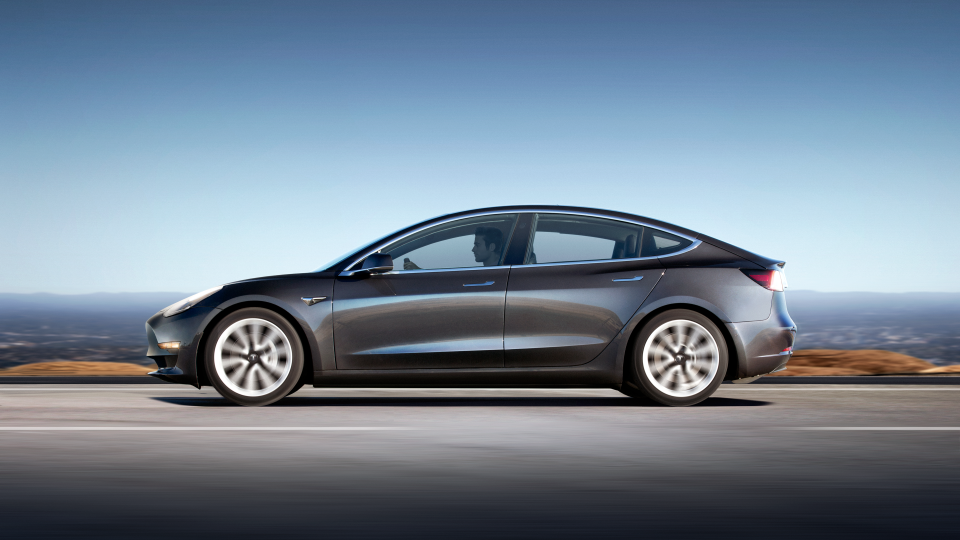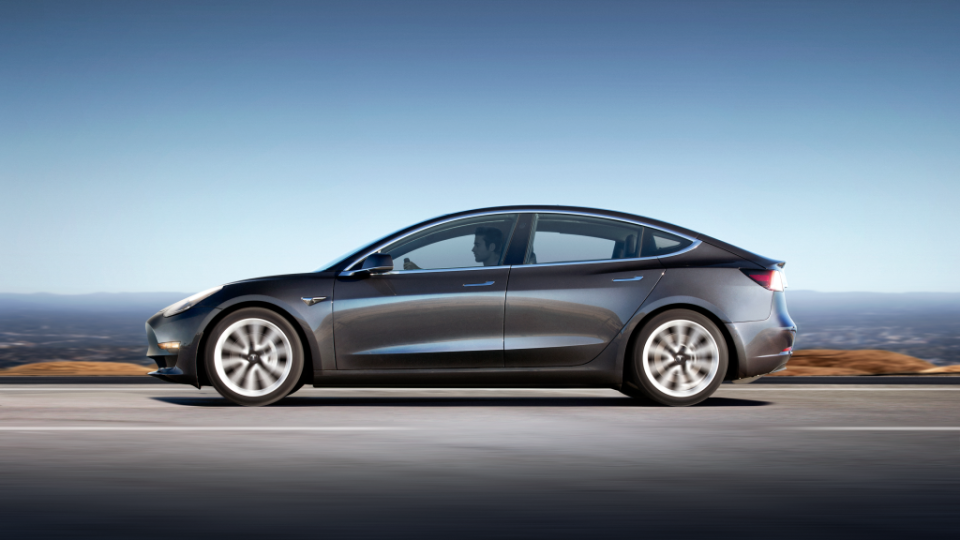Tesla Model 3: Everything You Need to Know
Tesla’s Roadster, the Model S, and Model X SUV are all luxury vehicles that only a small number of well-heeled consumers can even consider buying.
But those cars were just a means to an end--an end that came Friday evening at Tesla’s Fremont, Calif. factory, where CEO Elon Musk handed over the first batch of its mass-market electric vehicle, the Model 3.
“It was never our goal to just make expensive cars,” Musk said prior to the splashy handover event. “The whole point of Tesla was to build a great affordable electric car that was better than any gasoline car.”
A prototype of the Model 3 was unveiled in March 2016. And in the 16 months since, the hype and stakes have grown along with the number of people who have plunked down a $1,000 refundable deposit to reserve a car. Musk said Friday more than half million people now hold reservations.
Prior to the event, Fortune had a chance to take a brief drive in the upgraded version of a Model 3 outfitted with premium interior materials like tinted glass roof, an audio system with more power and speakers, heated side mirrors as well as a longer range battery pack.
It is simple without being cheap, it is roomy without being big. It is unmistakably a Tesla.
Here’s what all those people are waiting for.
The standard Model 3 will start at $35,000--yes, $35,000 is considered affordable in Tesla-land, where its luxury cars can cost more than $140,000-- and travel 220 miles on a single charge. If you want any other color than black--like midnight silver metallic, deep blue metallic, silver metallic, pearl white multi-coat, and red multi-coat--it will cost you an extra $1,000.
The standard version can accelerate from 0 to 60 miles per hour in 5.6 seconds and reach a top speed of 130 mph.
A single 15-inch touchscreen display inside the vehicle acts as a control center for music, air conditioning, and heating along with other features. The front center console is roomy, and has a special docking station for two smartphones.
Some of the more interesting features are features that are typically rather pedestrian. Air conditioning, for instance, is pumped from a long vent that stretches across the dashboard (see the photo below). The air’s direction is controlled via the central screen, and the effect is the feel of old school AC vents that you can toggle by hand without muddying up the interior view.
One of the nicer appointments is the extended rear glass, which creates a moonroof effect for passengers without the clutter a headliner found in traditional vehicles. The result is a roomier feel.
“Everything we do at Tesla has to be beautiful, but it's only great if it's functional,” said Franz von Holzhausen, head designer at Tesla. “We wanted to make the interior as big as possible even though it's a smaller car on the outside.
Other features include voice-activated controls, Bluetooth hands-free calling, and
The Model 3 comes with the same package of cameras, sensors, and radar in the luxury Model S and X, which is used to enable the company’s popular semi-autonomous driving feature Autopilot. This means there are eight cameras, 12 sensors, and forward-facing radar.
When plugged into Tesla’s superchargers, it will take 30 minutes to add 130 miles of range to the battery. The home-charging rate will be 30 miles of range hour on a 240-volt outlet.
Tesla has changed how customers get into the cars. There is no key fob--instead owners use their smartphones or a card, which looks like a hotel room access key, to get inside. This card can be handed to a valet and can even be programmed to limit the speed in valet mode. The famous Tesla door handles that pop out as the driver approaches the vehicle and are found on the Model S and X are unavailable on the 3. The handles are still flush with the car, but drivers and passengers must push the edge of the handle for it to pop out and become useable.
There’s another Model 3
Reservation holders can pay another $9,000, bringing the cost to $44,000, for an extended battery range of up to 310 miles. The long-range battery version car accelerates from 0 to 60 in 5.1 seconds and has a top speed of 140 mph. Charging the car’s batteries for 30 minutes will add 170 miles of range in 30 minutes using the supercharger.
Tesla will produce and deliver the long-range battery version of the Model 3 first before getting the standard version to customers in another two to three months.
For $5,000, buyers can also upgrade to the premium interior package to get better audio, heated seats, and an additional two USB ports for the backseat passengers. They can pay another $5,000 for what Tesla calls “enhanced Autopilot,” semi-autonomous capabilities that will keep the vehicle within the lane, automatically change lanes, self-park once the driver has arrived at their destination, and match speed to traffic conditions. Additional features will roll out over time through software updates, Tesla says.
For the full self-driving capability option, buyers must shell out another $3,000 on top of that enhanced Autopilot price.
For buyers who chose to get every upgrade like a premium paint job, 19-inch wheels, and full self-driving capability--which is not yet available, and likely won’t be anytime soon--the price tag will be just shy of $60,000.
At that point, a fully loaded Model 3 is no longer in the affordable camp. Instead, it’s creeping towards the cost of the base Model S, which starts at $69,500.
See original article on Fortune.com
More from Fortune.com


